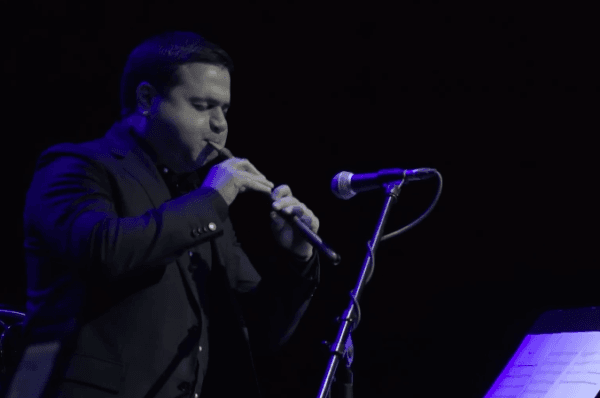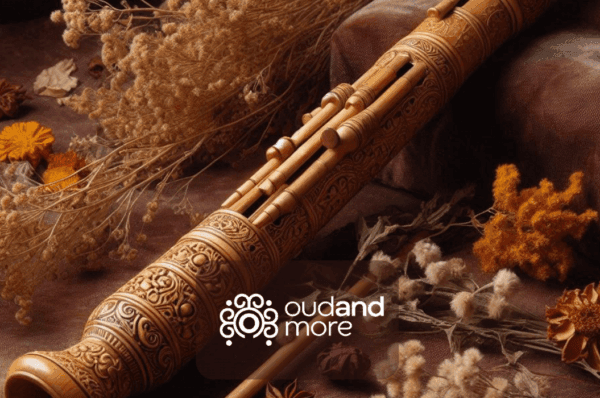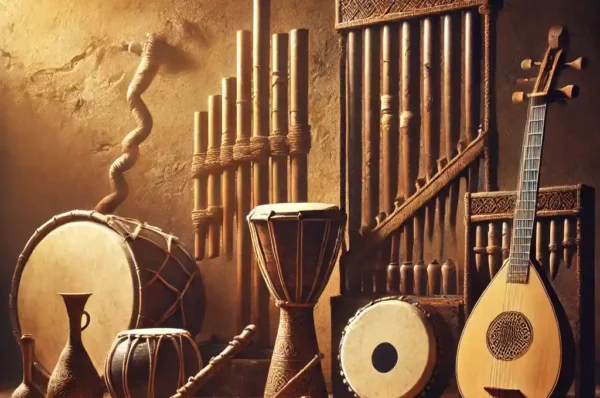Introduction
The oud, a string instrument with its roots in the Middle East, holds a rich history and cultural significance in various musical traditions worldwide.
Historical Origins
Dating back to ancient times, historical records trace the existence of the oud to as early as the 3rd century BCE. Although similar instruments were found in ancient Greek, Egyptian, and Mesopotamian cultures, the modern oud as we know it today began to take shape predominantly during the Abbasid era.
Cultural Significance
Arab Music Tradition:
In Arab music, the oud is revered as a solo instrument and plays a vital role in classical Arab music, showcasing its versatility and emotive capabilities.
Turkish Music Tradition:
Alongside instruments like the saz and kemençe, the oud contributes to the rich tapestry of traditional Turkish music, enriching its melodic landscape with its unique sound.
Greek Music Tradition:
Particularly prominent in genres like Rembetiko, the oud holds a significant place in Greek music, adding depth and character to its musical expressions.
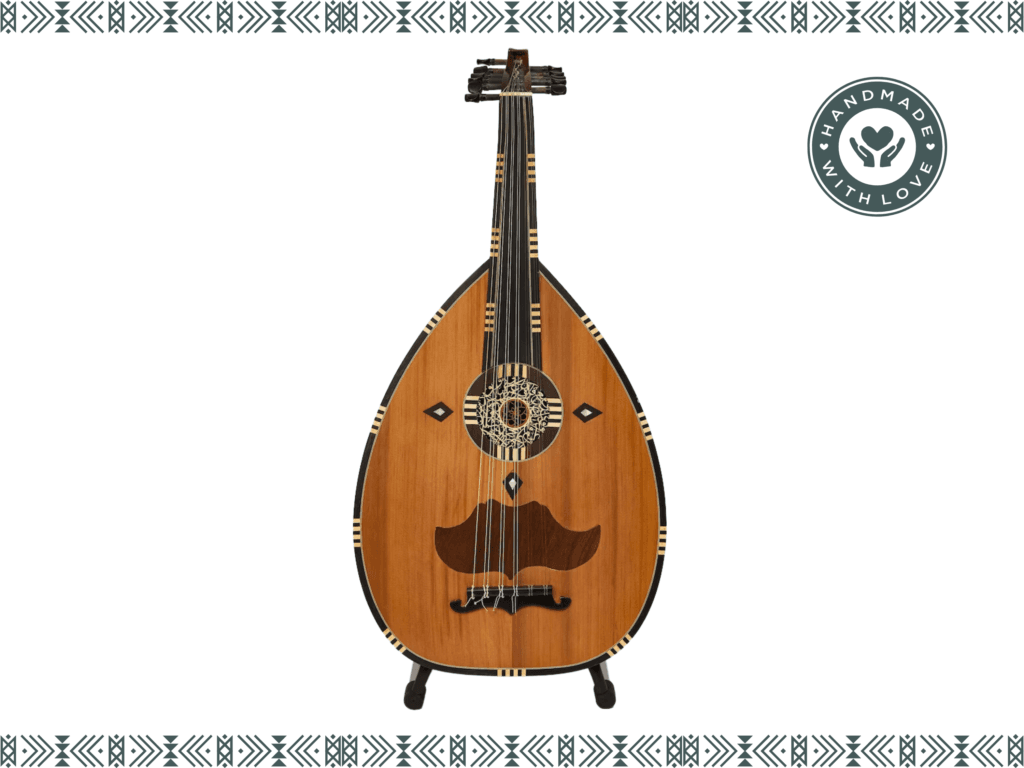
Instrumental Characteristics
Structural Features:
The oud typically features a rounded back, a short neck, and a soundboard adorned with decorative rosettes, showcasing its intricate craftsmanship.
String Configuration:
With typically eleven strings in six or seven courses, the oud is known for its distinct tuning system, contributing to its unique and captivating sound.
Playing Technique
Fingerstyle Technique:
The oud is primarily played using a fingerstyle technique, where the player plucks the strings with the fingertips or a plectrum, creating a rich and resonant sound.
Musical Repertoire
Traditional Repertoire:
The oud boasts a diverse repertoire, encompassing traditional melodies and compositions that have been passed down through generations, reflecting the cultural heritage of the regions where it is revered.
Contemporary Exploration:
In addition to its traditional repertoire, contemporary musicians continue to explore new horizons with the oud, incorporating it into various genres and styles, showcasing its versatility and adaptability.
Similar Instruments
Bağlama:
A Turkish folk music instrument, the bağlama shares structural similarities with the oud and is tuned in a comparable fashion, highlighting the interconnectedness of musical traditions across regions.
Laouto, Saz, and Cümbüş:
Other instruments like the Greek lute known as “laouto” and Turkish instruments like the “saz” and “cümbüş” bear resemblance to the oud, reflecting the diverse array of stringed instruments in regional music traditions.
Conclusion
In conclusion, the oud stands as a testament to the enduring legacy of musical heritage in the Middle East and beyond. With its timeless appeal and profound cultural significance, the oud continues to captivate audiences worldwide, bridging diverse musical traditions and fostering a deeper appreciation for the richness of human creativity and expression.
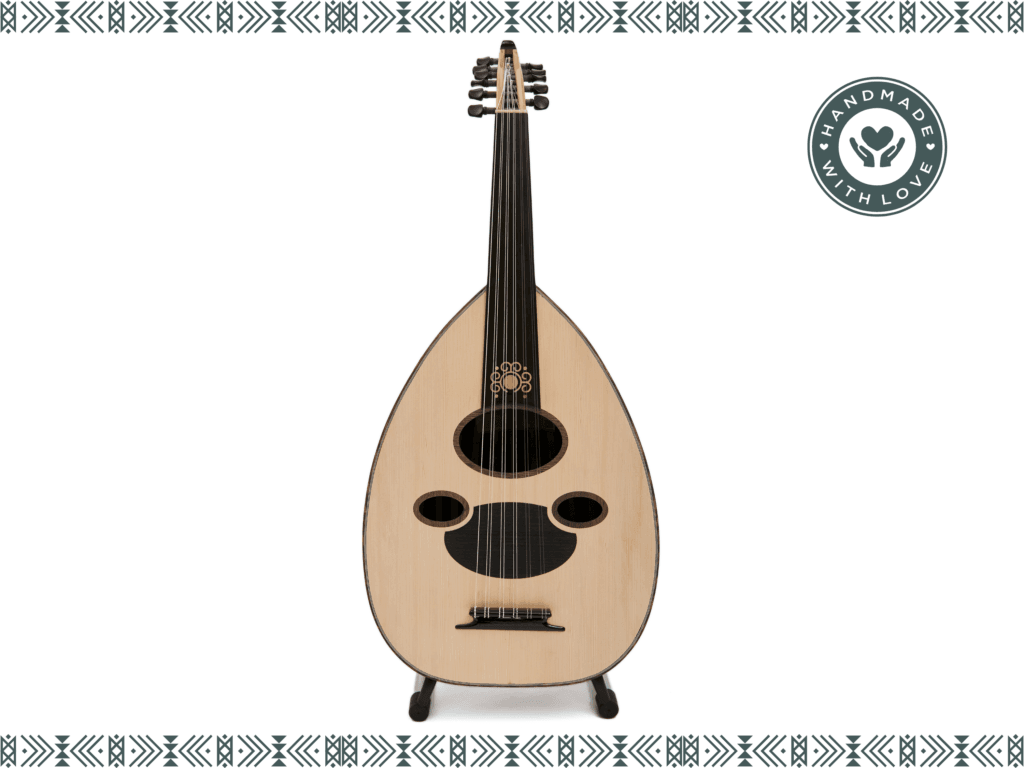
To improve your oud playing skills, consider the following recommendations:
- Mastering Fundamental Techniques: It’s essential to thoroughly learn basic techniques such as finger positioning, fret usage, and chord formation. Practicing these fundamentals will enhance your playing abilities.
- Diversifying Repertoire: Acquire a broad repertoire encompassing various music genres and periods. Playing pieces from different styles will enrich your musical understanding.
- Maintaining Correct Posture and Positioning: Maintaining proper posture and positioning while playing the oud is crucial. Ensuring correct sitting or standing posture, placing your hands correctly, and holding the instrument properly will positively impact your playing experience.
- Engaging in Technique-Building Exercises: Regularly practicing exercises to improve finger dexterity, speed up chord transitions, and enhance right-hand technique is beneficial. These exercises can boost your technical skills, leading to smoother playing.
- Learning from Masters and Watching Performances: Learning from oud masters and observing their performances is an effective way to improve your playing skills. Attending masterclasses, attending concerts, or studying master players’ techniques through online resources can be helpful.
- Consistent and Goal-Oriented Practice: Consistent and focused practice is key to becoming a better oud player. Setting specific goals and dedicating time to regular practice sessions are important for tracking progress and maintaining motivation.
- Listening and Analyzing: Listening to and analyzing various musical sources can inspire you stylistically and help you learn different techniques. Listening to recordings of other musicians and examining their playing styles can assist you in developing your own playing style.
“Oud Techniques: Mastering Fingerstyle” – www.oudlessons.com/techniques
Experience the Melodies of the East at OudAndMoreMusic.com! Dive into a world of enchanting Turkish and Arabic music instruments. From the mesmerizing tones of the oud to the rhythmic beats of the darbuka, our collection is a treasure trove for music enthusiasts. Explore our website to discover a harmonious blend of tradition and innovation. Whether you’re a seasoned musician or a curious beginner, our instruments will ignite your passion for music. Shop now and embark on a musical journey like no other!


